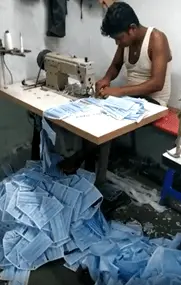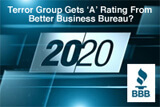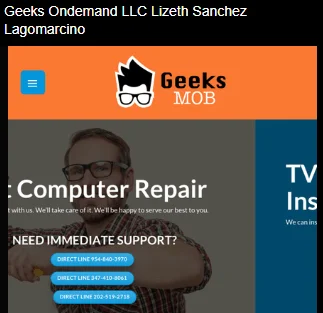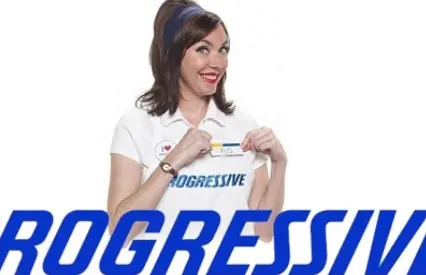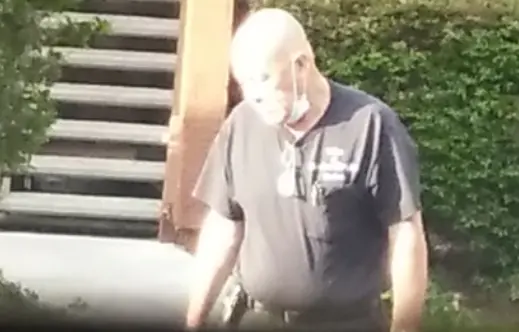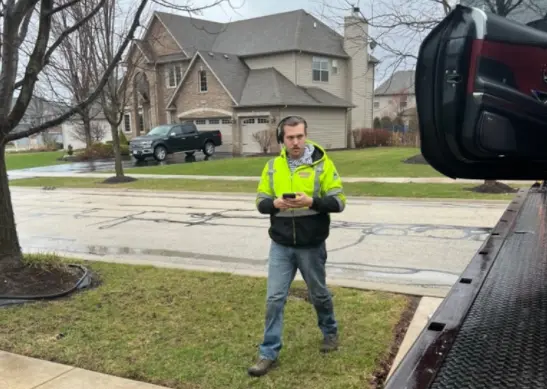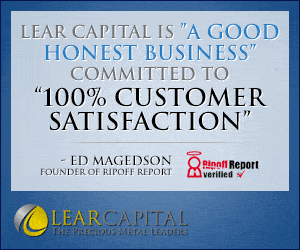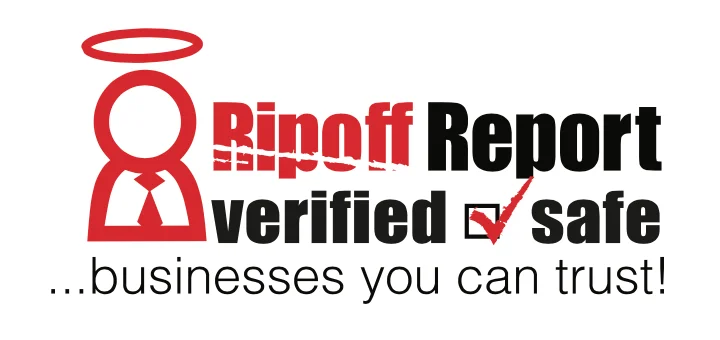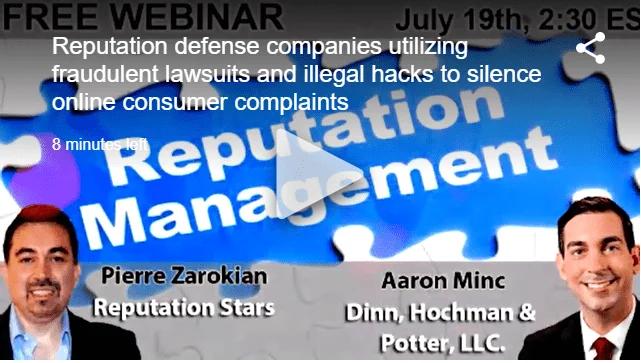Complaint Review: RJ and Makay, Darin Manis & Misty Rice - Boise Idaho
- RJ and Makay, Darin Manis & Misty Rice 1360 Ambergate G, Mounument, Colorado 80132 Boise, Idaho U.S.A.
- Phone:
- Web:
- Category: Employment Services
RJ and Makay, Darin Manis & Misty Rice They have you recruiting for Financial Advisors to move from their current company to their client. You have to schedule so many appointments per month and if you don't schedule one appointment per day they harrass you. You are suppose to be paid for the FA that shows up for the appointment with their client company - a financial planning company. They don't pay you unless the person shows up Monument, Colorado & Boise, Idaho
*REBUTTAL Individual responds: The Greatest Swindle Ever Sold
*UPDATE EX-employee responds: The Mortgage Fraud Scandal Is The Biggest In Human History
*REBUTTAL Individual responds: This "anonymous" charge is completely false.
*REBUTTAL Individual responds: This "anonymous" charge is completely false.
*REBUTTAL Individual responds: This "anonymous" charge is completely false.
*REBUTTAL Individual responds: This "anonymous" charge is completely false.
listed on other sites?
Those sites steal
Ripoff Report's
content.
We can get those
removed for you!
Find out more here.
Ripoff Report
willing to make a
commitment to
customer satisfaction
Click here now..
RJandMakay is a ripoff recruitment company. They have you sign a contract and promise that you will be paid $150 for each FA that you schedule to meet with a Manager with their Financial Planning Company. They have you calling FAs in various States to schedule the appointments. If you don't schedule an appointment they harrass you. You are suppose to schedule so many appointments and if you don't they terminate your contract.
You can have so many appointments set up but you will never see the money because they will say that the person never showed up for the appointment. You could have tentative appointments scheduled for future months but you will never receive the money because you are no longer employed and no matter how much work you did to schedule those appointments you will not receive the money and I am sure that they will call those people and get the money for themselves.
Do not fall for this scam. It is a waste of your time and effort.
Anonymous
Anonymous, Nebraska
U.S.A.
This report was posted on Ripoff Report on 02/10/2009 09:23 PM and is a permanent record located here: https://www.ripoffreport.com/reports/rj-and-makay-darin-manis-misty-rice/boise-idaho/rj-and-makay-darin-manis-misty-rice-they-have-you-recruiting-for-financial-advisors-to-422737. The posting time indicated is Arizona local time. Arizona does not observe daylight savings so the post time may be Mountain or Pacific depending on the time of year. Ripoff Report has an exclusive license to this report. It may not be copied without the written permission of Ripoff Report. READ: Foreign websites steal our content
If you would like to see more Rip-off Reports on this company/individual, search here:
#6 REBUTTAL Individual responds
The Greatest Swindle Ever Sold
AUTHOR: Jack Wilson - (USA)
SUBMITTED: Thursday, June 01, 2017
On October 3rd, as the spreading economic meltdown threatened to topple financial behemoths like American International Group (AIG) and Bank of America and plunged global markets into freefall, the U.S. government responded with the largest bailout in American history. The Emergency Economic Stabilization Act of 2008, better known as the Troubled Asset Relief Program (TARP), authorized the use of $700 billion to stabilize the nation's failing financial systems and restore the flow of credit in the economy.
The legislation's guidelines for crafting the rescue plan were clear: the TARP should protect home values and consumer savings, help citizens keep their homes, and create jobs. Above all, with the government poised to invest hundreds of billions of taxpayer dollars in various financial institutions, the legislation urged the bailout's architects to maximize returns to the American people.
That $700 billion bailout has since grown into a more than $12 trillion commitment by the U.S. government and the Federal Reserve. About $1.1 trillion of that is taxpayer money—the TARP money and an additional $400 billion rescue of mortgage companies Fannie Mae and Freddie Mac. The TARP now includes 12 separate programs, and recipients range from megabanks like Citigroup and JPMorgan Chase to automakers Chrysler and General Motors.
Seven months in, the bailout's impact is unclear. The Treasury Department has used the recent "stress test" results it applied to 19 of the nation's largest banks to suggest that the worst might be over; yet the International Monetary Fund as well as economists like New York University professor and economist Nouriel Roubini and New York Times columnist Paul Krugman predict greater losses in U.S. markets, rising unemployment, and generally tougher economic times ahead.
What cannot be disputed, however, is the financial bailout's biggest loser: the American taxpayer. The U.S. government, led by the Treasury Department, has done little, if anything, to maximize returns on its trillion-dollar, taxpayer-funded investment. So far, the bailout has favored rescued financial institutions by subsidizing their losses to the tune of $356 billion, shying away from much-needed management changes and—with the exception of the automakers—letting companies take taxpayer money without a coherent plan for how they might return to viability.
The bailout's perks have been no less favorable for private investors who are now picking over the economy's still-smoking rubble at the taxpayers' expense. The newer bailout programs rolled out by Treasury Secretary Timothy Geithner give private equity firms, hedge funds, and other private investors significant leverage to buy "toxic" or distressed assets, while leaving taxpayers stuck with the lion's share of the risk and potential losses.
Given the lack of transparency and accountability, don't expect taxpayers to be able to object too much. After all, remarkably little is known about how TARP recipients have used the government aid received. Nonetheless, recent government reports, Congressional testimony, and commentaries offer those patient enough to pore over hundreds of pages of material glimpses of just how Wall Street friendly the bailout actually is. Here, then, based on the most definitive data and analyses available, are six of the most blatant and alarming ways taxpayers have been scammed by the government's $1.1-trillion, publicly-funded bailout.
1. By overpaying for its TARP investments, the Treasury Department provided bailout recipients with generous subsidies at the taxpayer's expense.
When the Treasury Department ditched its initial plan to buy up "toxic" assets and instead invest directly in financial institutions, then-Treasury Secretary Henry Paulson, Jr. assured Americans that they'd get a fair deal. "This is an investment, not an expenditure, and there is no reason to expect this program will cost taxpayers anything," he said in October 2008.
Yet the Congressional Oversight Panel (COP), a five-person group tasked with ensuring that the Treasury Department acts in the public's best interest, concluded in its monthly report for February that the department had significantly overpaid by tens of billions of dollars for its investments. For the 10 largest TARP investments made in 2008, totaling $184.2 billion, Treasury received on average only $66 worth of assets for every $100 invested. Based on that shortfall, the panel calculated that Treasury had received only $176 billion in assets for its $254 billion investment, leaving a $78 billion hole in taxpayer pockets.
 Not all investors subsidized the struggling banks so heavily while investing in them. The COP report notes that private investors received much closer to fair market value in investments made at the time of the early TARP transactions. When, for instance, Berkshire Hathaway invested $5 billion in Goldman Sachs in September, the Omaha-based company received securities worth $110 for each $100 invested. And when Mitsubishi invested in Morgan Stanley that same month, it received securities worth $91 for every $100 invested.
Not all investors subsidized the struggling banks so heavily while investing in them. The COP report notes that private investors received much closer to fair market value in investments made at the time of the early TARP transactions. When, for instance, Berkshire Hathaway invested $5 billion in Goldman Sachs in September, the Omaha-based company received securities worth $110 for each $100 invested. And when Mitsubishi invested in Morgan Stanley that same month, it received securities worth $91 for every $100 invested.
As of May 15th, according to the Ethisphere TARP Index, which tracks the government's bailout investments, its various investments had depreciated in value by almost $147.7 billion. In other words, TARP's losses come out to almost $1,300 per American taxpaying household.
2. As the government has no real oversight over bailout funds, taxpayers remain in the dark about how their money has been used and if it has made any difference.
While the Treasury Department can make TARP recipients report on just how they spend their government bailout funds, it has chosen not to do so. As a result, it's unclear whether institutions receiving such funds are using that money to increase lending—which would, in turn, boost the economy—or merely to fill in holes in their balance sheets.
Neil M. Barofsky, the special inspector general for TARP, summed the situation up this way in his office's April quarterly report to Congress: "The American people have a right to know how their tax dollars are being used, particularly as billions of dollars are going to institutions for which banking is certainly not part of the institution's core business and may be little more than a way to gain access to the low-cost capital provided under TARP."
This lack of transparency makes the bailout process highly susceptible to fraud and corruption. Barofsky's report stated that 20 separate criminal investigations were already underway involving corporate fraud, insider trading, and public corruption. He also told the Financial Times that his office was investigating whether banks manipulated their books to secure bailout funds. "I hope we don't find a single bank that's cooked its books to try to get money, but I don't think that's going to be the case."
Economist Dean Baker, co-director of the Center for Economic and Policy Research in Washington, suggested to TomDispatch in an interview that the opaque and complicated nature of the bailout may not be entirely unintentional, given the difficulties it raises for anyone wanting to follow the trail of taxpayer dollars from the government to the banks. "[Government officials] see this all as a Three Card Monte, moving everything around really quickly so the public won't understand that this really is an elaborate way to subsidize the banks," Baker says, adding that the public "won't realize we gave money away to some of the richest people."
3. The bailout's newer programs heavily favor the private sector, giving investors an opportunity to earn lucrative profits and leaving taxpayers with most of the risk.
Under Treasury Secretary Geithner, the Treasury Department has greatly expanded the financial bailout to troubling new programs like the Public-Private Investment Program (PPIP) and the Term Asset-Backed-Securities Loan Facility (TALF). The PPIP, for example, encourages private investors to buy "toxic" or risky assets on the books of struggling banks. Doing so, we're told, will get banks lending again because the burdensome assets won't weigh them down. Unfortunately, the incentives the Treasury Department is offering to get private investors to participate are so generous that the government—and, by extension, American taxpayers—are left with all the downside.
Joseph Stiglitz, the Nobel-prize winning economist, described the PPIP program in a New York Times op-ed this way:
"Consider an asset that has a 50-50 chance of being worth either zero or $200 in a year's time. The average 'value' of the asset is $100. Ignoring interest, this is what the asset would sell for in a competitive market. It is what the asset is 'worth.' Under the plan by Treasury Secretary Timothy Geithner, the government would provide about 92 percent of the money to buy the asset but would stand to receive only 50 percent of any gains, and would absorb almost all of the losses. Some partnership!
Assume that one of the public-private partnerships the Treasury has promised to create is willing to pay $150 for the asset. That's 50 percent more than its true value, and the bank is more than happy to sell. So the private partner puts up $12, and the government supplies the rest—$12 in 'equity' plus $126 in the form of a guaranteed loan.
If, in a year's time, it turns out that the true value of the asset is zero, the private partner loses the $12, and the government loses $138. If the true value is $200, the government and the private partner split the $74 that's left over after paying back the $126 loan. In that rosy scenario, the private partner more than triples his $12 investment. But the taxpayer, having risked $138, gains a mere $37.
Worse still, the PPIP can be easily manipulated for private gain. As economist Jeffrey Sachs has described it, a bank with worthless toxic assets on its books could actually set up its own public-private fund to bid on those assets. Since no true bidder would pay for a worthless asset, the bank's public-private fund would win the bid, essentially using government money for the purchase. All the public-private fund would then have to do is quietly declare bankruptcy and disappear, leaving the bank to make off with the government money it received. With the PPIP deals set to begin in the coming months, time will tell whether private investors actually take advantage of the program's flaws in this fashion.
The Treasury Department's TALF program offers equally enticing possibilities for potential bailout profiteers, providing investors with a chance to double, triple, or even quadruple their investments. And like the PPIP, if the deal goes bad, taxpayers absorb most of the losses. "It beats any financing that the private sector could ever come up with," a Wall Street trader commented in a recent Fortune magazine story. "I almost want to say it is irresponsible."
4. The government has no coherent plan for returning failing financial institutions to profitability and maximizing returns on taxpayers' investments.
Compare the treatment of the auto industry and the financial sector, and a troubling double standard emerges: As a condition for taking bailout aid, the government required Chrysler and General Motors to present detailed plans on how the companies would return to profitability. Yet the Treasury Department attached minimal conditions to the billions injected into the largest bailed-out financial institutions. Moreover, neither Geithner nor Lawrence Summers, one of President Barack Obama's top economic advisors, nor the president himself has articulated any substantive plan or vision for how the bailout will help these institutions recover and, hopefully, maximize taxpayers' investment returns.
The Congressional Oversight Panel highlighted the absence of such a comprehensive plan in its January report. Three months into the bailout, the Treasury Department "has not yet explained its strategy," the report stated. "Treasury has identified its goals and announced its programs, but it has not yet explained how the programs chosen constitute a coherent plan to achieve those goals."
Today, the department's endgame for the bailout still remains vague. Thomas Hoenig, president of the Federal Reserve Bank of Kansas City, wrote in the Financial Times in May that the government's response to the financial meltdown has been "ad hoc, resulting in inequitable outcomes among firms, creditors, and investors." Rather than perpetually prop up banks with endless taxpayer funds, Hoenig suggests that the government should allow banks to fail. Only then, he believes, can crippled financial institutions and systems be fixed. "Because we still have far to go in this crisis, there remains time to define a clear process for resolving large institutional failure. Without one, the consequences will involve a series of short-term events and far more uncertainty for the global economy in the long run."
The healthier and more profitable bailout recipients are once financial markets rebound, the more taxpayers will earn on their investments. Without a plan, however, banks may limp back to viability while taxpayers lose their investments or even absorb further losses.
5. The bailout's focus on Wall Street mega-banks ignores smaller banks serving millions of American taxpayers that face an equally uncertain future.
The government may not have a long-term strategy for its trillion-dollar bailout, but its guiding principle, however misguided, is clear: What's good for Wall Street will be best for the rest of the country.
On the day the mega-bank stress tests were officially released, another set of stress-test results came out to much less fanfare. In its quarterly report on the health of individual banks and the banking industry as a whole, Institutional Risk Analytics (IRA), a respected financial services organization, found that the stress levels among more than 7,500 FDIC-reporting banks nationwide had risen dramatically. For 1,575 of the banks, net incomes had turned negative due to decreased lending and less risk-taking.
The conclusion IRA drew was telling: "Our overall observation is that U.S. policy makers may very well have been distracted by focusing on 19 large stress test banks designed to save Wall Street and the world's central bank bondholders, this while a trend is emerging of a going concern viability crash taking shape under the radar." The report concluded with a question: "Has the time come to shift the policy focus away from the things that we love, namely big zombie banks, to tackle things that are truly hurting us?"
6. The bailout encourages the very behaviors that created the economic crisis in the first place instead of overhauling our broken financial system and helping the individuals most affected by the crisis.
As Joseph Stiglitz explained in the New York Times, one major cause of the economic crisis was bank overleveraging. "[U]sing relatively little capital of their own," he wrote, "[banks] borrowed heavily to buy extremely risky real estate assets. In the process, they used overly complex instruments like collateralized debt obligations." Financial institutions engaged in overleveraging in pursuit of the lucrative profits such deals promised—even if those profits came with staggering levels of risk.
Sound familiar? It should, because in the PPIP and TALF bailout programs the Treasury Department has essentially replicated the very overleveraged, risky, complex system that got us into this mess in the first place: in other words, the government hopes to repair our financial system by using the flawed practices that caused this crisis.
Then there are the institutions deemed "too big to fail." These financial giants—among them AIG, Citigroup, and Bank of America—have been kept afloat by billions of dollars in bottomless bailout aid. Yet reinforcing the notion that any institution is "too big to fail" is dangerous to the economy. When a company like AIG grows so large that it becomes "too big to fail," the risk it carries is systemic, meaning failure could drag down the entire economy. The government should force "too big to fail" institutions to slim down to a safer, more modest size; instead, the Treasury Department continues to subsidize these financial giants, reinforcing their place in our economy.
Of even greater concern is the message the bailout sends to banks and lenders—namely, that the risky investments that crippled the economy are fair game in the future. After all, if banks fail and teeter at the edge of collapse, the government promises to be there with a taxpayer-funded, potentially profitable safety net.
The handling of the bailout makes at least one thing clear, however: It's not your health that the government is focused on, it's theirs—the very banks and lenders whose convoluted financial systems provided the underpinnings for staggering salaries and bonuses while bringing our economy to the brink of another Great Depression.
#5 UPDATE EX-employee responds
The Mortgage Fraud Scandal Is The Biggest In Human History
AUTHOR: Jack Wilson - (USA)
SUBMITTED: Wednesday, May 31, 2017
We have long known that lender fraud was rampant during the real estate boom. The FBI began warning of an “epidemic” of mortgage fraud as early as 2004. We know that mortgage originators invented “low doc” and “no doc” loans, encouraged borrowers to take out “liar loans”, and promoted “NINJA loans” (no income, no job, no assets, no problem!). All of these schemes were fraudulent from the get-go. Property appraisers were involved, paid to overvalue real estate. That is fraud. The securitizers packaged trash into bundles that ratings agencies blessed with the triple A seal of approval. By their own admission, raters worked with securitizers to provide the rating desired, never looking at the loan tapes to see what they were rating. Fraud. Venerable investment banks like Goldman Sachs packaged the trashiest securities into collateralized debt obligations at the behest of hedge fund managers--who were allowed to choose the most toxic of the toxic waste—then sold the CDOs on to their own customers and allowed the hedge funds to bet against them. More fraud.
Indeed, the largest financial institutions were run by their management as what my colleague Bill Black calls “control frauds”. That is, the banks used accounting fraud to manufacture fake profits so that they could pay huge bonuses to top management. The latest data out on Wall Street bonuses show that these institutions are still run as control frauds, with another record year of bonuses paid by cooking the books. The fraud continues unabated.
This is the biggest scandal in human history. Indeed, all previous scandals from around the globe combined cannot even touch this one in terms of scale and scope and stench. This is the mother of all frauds and it will be etched into the history books for all time.
Many have called for a national moratorium on foreclosures. Even some of the banks that have been run as control frauds have voluntarily stopped foreclosing. And yet President Obama, ever the centrist, has taken sides with the Securities Industry and Financial Markets Association, which warns that “it would be catastrophic to impose a system-wide moratorium on all foreclosures and such actions could do damage to the housing market and the economy”.
No, it would expose the securities industry, itself, as the chief architect of the biggest scandal in human history.
Now we know that it was not just the mortgage brokers, and the appraisers, and the ratings agencies, and the accountants, and the investment banks that were behind the fraud. It was the securitization process itself that was fraudulent. Indeed, the securities themselves are fraudulent. Many, perhaps most, maybe all of them.
Some are trying to argue that this is just a matter of some missing paperwork. A moratorium would allow the banks to get all their ducks in a row so that they can supply all the documents needed to foreclose.
However, as reported by Ellen Brown (at Web of Debt) and by Yves Smith (at Naked Capitalism), the paperwork does not exist. Worse, as Yves has discovered, the banks are furiously working to manufacture documents, aided and abetted by companies like DocX that specialize in “document recovery solutions”—for a fee they will create fraudulent documents that banks can use in court.
The banks would like us to believe that in the speculative frenzy of the real estate boom they “forgot” to do some of the required paperwork. That is not likely. The absence of the documents was required to run the scam.
Recall that the banks invented “no doc” mortgages. This was not at the behest of no-account borrowers, high school dropouts with bad credit histories who were duping investment bankers into making mortgage loans they could not repay. No, these mortgages were created and endorsed by originators and securitizers and credit raters to create a patina of “plausible deniability” to be used later in court when they were sued for fraud by investors who bought the securities and by the borrowers who could not possibly service the mortgages. Because if the originators had ever requested the documentation from borrowers it would have demonstrated that the mortgages and the securities were frauds.
Similarly, the paperwork required for the securities was never done because the securities were fraudulent. Yves helps to explains why. The trust that purportedly underlies a mortgage backed security must hold the “note”—the borrower's IOU (in 45 US states the mortgage that is a lien on the property is an “accessory” to the note, and is not sufficient to do a foreclosure). If the note is not conveyed to the trustee (usually before closing but sometimes up to 90 days after signing) the securities are no good.
This is not just some pesky little rule imposed by a pin-headed regulator. This is IRS code. As reported by Brown, MBSs are typically pooled through a Real Estate Mortgage Investment Conduit (REMIC) that must according to the Internal Revenue Code hold all the paperwork demonstrating a complete chain of title. Done properly, taxes are avoided. Since a number of intermediaries are usually involved from the mortgage originator through to the trustee of the REMIC, there must be endorsements all along the line. However, it now appears that most of the original notes are still held in the loan originator warehouses. There are no endorsements. The trustees do not have the notes. Can anyone say “tax fraud”?
So why weren't the notes conveyed to the REMICs? There seem to be two possibilities—probably both of them correct. Karl Denninger at MarketTicker believes it was because the REMIC trustees feared an audit by investors in the securities. If the documentation existed, it would show that the mortgage loans were fraudulent. Far better to “lose” the docs, then later manufacture new ones for the foreclosure.
According to Brown (quoting Steve Liesman and Neil Garfield), the other possibility is that the tranching process actually prohibited assignment of the notes to the REMICs. Bundles of mortgages of varying quality would be tranched into a variety of securities, say from AAA to BBB. But no individual mortgage is actually assigned to a particular tranche—until it defaults. When one defaults, it is assigned to a lower tranche security and then the foreclosure process begins. This means that from inception of that BBB security, there was no way to assign a note to the trustee because the trustee did not know in advance which mortgage would default. The REMIC trustees tried to get around that by using a dummy conduit called MERS (Mortgage Electronic Registration System) that would “hold” the mortgages and assign them to the proper tranches later. But they do not have the paperwork either, and some courts have rejected their claims as owners.
This is a complete mess. What President Obama must understand is that fraud is endemic at every level of the home finance food chain. We were long told that securitized mortgages cannot be modified because of the complexity involved—modification of most mortgages would require consent of the holders of the securities that each have a piece of the mortgage. But actually it is impossible to tell how many—if any—of these securities holders have a legitimate claim on any of the mortgages. Simply imposing a moratorium will not be enough—it will just give the banks time to manufacture false documents, encouraging even more fraud. Meanwhile, half of all homeowners with mortgages are already underwater or are within spitting distance of being underwater. Many of these are drowning because the epidemic of fraud perpetrated by financial institutions destroyed our economy and caused housing prices to collapse.
The President needs to try a different approach, consisting of the following series of steps:
1. Declare a national bank holiday that would close the biggest financial institutions—say, the top dozen or so. Send in the supervisors to examine their books to uncover fraud. Determine which ones are insolvent and resolve them. While resolving them, net their claims on one another (including derivatives). Do not allow any insolvent institutions to reopen, and do not use the resolution process to merge institutions (we don't need even bigger “too big to fail” banks). Prosecute the crooks and jail the guilty.
2. Stop all foreclosures. Investigate and prosecute all institutions that have been selling or buying fake documents to be used in foreclosures. Prosecute the crooks and jail the guilty.
3. Announce that all homeowners who occupied their homes on October 1, 2010 will be allowed to remain in their homes indefinitely. Create a national mediation board to adjust all mortgage payments to “owner's equivalent rent”—the fair value of rent for the home. Establish a fund to provide rental assistance to keep low income homeowners in their homes.
4. Give purported mortgage holders 30 days to produce the original notes; if they cannot find them, hand the homes over to the owner-occupants—free and clear of debt.
5. Create a process to allow securities holders to sue for recovery of value. This must be national—state courts will not be able to handle the case load.
6. Direct the GSEs to refinance mortgages at a low fixed rate. Mortgages would be provided against real estate appraised at fair market value to any borrower for a primary residence. The GSEs would pay holders of existing mortgages only current fair market value. Those holding these mortgages can seek redress through the process outlined in step 5. Only in the case of borrower fraud would the homeowner be held responsible for losses attributed to the refinancing.
7. There will be fall-out from losses. It is better to deal with the collateral damage directly than to prop up the control fraud banks. For example, pension funds hold toxic waste securities as well as equities in the control fraud banks, and by all reasonable accounting the Pension Benefit Guarantee Corporation is already insolvent. But it is better to directly bail-out pensions than to maintain the charade that fraudulently created securities have value.
Bill Black likes to joke that economists are afraid to use the “F” word (fraud). The President must come to realize that there is no other word that can be applied to the US home finance system. Until we deal with the fraud we will never resolve this financial crisis.
(Go to www.nakedcapitalism.com for Yves Smith, “4ClosureFraud posts lender processing services mortgage document fabrication sheet”, October 3, 2010; and to www.webofdebt.com for Ellen Brown, “Foreclosuregate and Obama's ‘pocket veto'”, October 7, 2010.)
L. Randall Wray is a Professor of Economics, University of Missouri—Kansas City. A student of Hyman Minsky, his research focuses on monetary and fiscal policy as well as unemployment and job creation. He writes a weekly column for Benzinga every Tuesday.
He also blogs at New Economic Perspectives, and is a BrainTruster at New Deal 2.0. He is a senior scholar at the Levy Economics Institute, and has been a visiting professor at the University of Rome (La Sapienza), UNAM (Mexico City), University of Paris (South), and the University of Bologna (Italy).
#4 REBUTTAL Individual responds
This "anonymous" charge is completely false.
AUTHOR: Misty Rice - (U.S.A.)
SUBMITTED: Wednesday, February 25, 2009
The accusation of us trying to harass and push out recruiters so we can keep an extra few hundred bucks is ludicrous. Just because an individual recruiter doesn't have success doesn't mean that we are ripping people off. Not everyone is meant to be a cold caller. Not everyone who does this is going to succeed. That doesn't make us a scam. It's the same with other kinds of cold calling careers as well. There is no money invested by our recruiters, no payment of any kind is made to RJ & Makay by a recruiter, and we supply all of the lists to call.
Maryann has been paid for all qualified in-person interviews that has happened that she set up and will be paid for any others that happen within 60 days of her last day. The idea that it is somehow normal that we are setting first time in-person interviews months away is just nuts. If the interview doesn't materialize usually within a few weeks the likelihood of it happening at all is minimal.
We have hundreds of recruiters, the best known names in the financial services industry for clients, and are regarded as an expert in the financial sector by media such as The Wall Street Journal, CNBC, Investment News, Reuters and dozens of other recognized publications.
Specific rebuttals:
First, we have almost 300 recruiters at the present time that work in various different divisions collecting many different kinds of compensation options. Second, for the division this recruiter, Maryann, worked in we currently pay $200 or more for each in-person interview that happens. Third, our firm is setting hundreds of these kinds of interviews each month. We don't just "say" an interview didn't happen. It did or it didn't. If it did and it was qualified than the recruiter gets paid. Period. Fourth, there is no harassment whatsoever. However, when a recruiter is provided a list of brokers to call and they are not setting any/many interviews we occasionally check in to see if they are calling or if we need to take the list and give it to someone else.
We believe in doing the right thing by our clients and by those recruiters we contract with. I am very sorry that Maryann did not work out but that doesn't mean we aren't a great firm with a great reputation in our industry.
#3 REBUTTAL Individual responds
This "anonymous" charge is completely false.
AUTHOR: Misty Rice - (U.S.A.)
SUBMITTED: Wednesday, February 25, 2009
The accusation of us trying to harass and push out recruiters so we can keep an extra few hundred bucks is ludicrous. Just because an individual recruiter doesn't have success doesn't mean that we are ripping people off. Not everyone is meant to be a cold caller. Not everyone who does this is going to succeed. That doesn't make us a scam. It's the same with other kinds of cold calling careers as well. There is no money invested by our recruiters, no payment of any kind is made to RJ & Makay by a recruiter, and we supply all of the lists to call.
Maryann has been paid for all qualified in-person interviews that has happened that she set up and will be paid for any others that happen within 60 days of her last day. The idea that it is somehow normal that we are setting first time in-person interviews months away is just nuts. If the interview doesn't materialize usually within a few weeks the likelihood of it happening at all is minimal.
We have hundreds of recruiters, the best known names in the financial services industry for clients, and are regarded as an expert in the financial sector by media such as The Wall Street Journal, CNBC, Investment News, Reuters and dozens of other recognized publications.
Specific rebuttals:
First, we have almost 300 recruiters at the present time that work in various different divisions collecting many different kinds of compensation options. Second, for the division this recruiter, Maryann, worked in we currently pay $200 or more for each in-person interview that happens. Third, our firm is setting hundreds of these kinds of interviews each month. We don't just "say" an interview didn't happen. It did or it didn't. If it did and it was qualified than the recruiter gets paid. Period. Fourth, there is no harassment whatsoever. However, when a recruiter is provided a list of brokers to call and they are not setting any/many interviews we occasionally check in to see if they are calling or if we need to take the list and give it to someone else.
We believe in doing the right thing by our clients and by those recruiters we contract with. I am very sorry that Maryann did not work out but that doesn't mean we aren't a great firm with a great reputation in our industry.
#2 REBUTTAL Individual responds
This "anonymous" charge is completely false.
AUTHOR: Misty Rice - (U.S.A.)
SUBMITTED: Wednesday, February 25, 2009
The accusation of us trying to harass and push out recruiters so we can keep an extra few hundred bucks is ludicrous. Just because an individual recruiter doesn't have success doesn't mean that we are ripping people off. Not everyone is meant to be a cold caller. Not everyone who does this is going to succeed. That doesn't make us a scam. It's the same with other kinds of cold calling careers as well. There is no money invested by our recruiters, no payment of any kind is made to RJ & Makay by a recruiter, and we supply all of the lists to call.
Maryann has been paid for all qualified in-person interviews that has happened that she set up and will be paid for any others that happen within 60 days of her last day. The idea that it is somehow normal that we are setting first time in-person interviews months away is just nuts. If the interview doesn't materialize usually within a few weeks the likelihood of it happening at all is minimal.
We have hundreds of recruiters, the best known names in the financial services industry for clients, and are regarded as an expert in the financial sector by media such as The Wall Street Journal, CNBC, Investment News, Reuters and dozens of other recognized publications.
Specific rebuttals:
First, we have almost 300 recruiters at the present time that work in various different divisions collecting many different kinds of compensation options. Second, for the division this recruiter, Maryann, worked in we currently pay $200 or more for each in-person interview that happens. Third, our firm is setting hundreds of these kinds of interviews each month. We don't just "say" an interview didn't happen. It did or it didn't. If it did and it was qualified than the recruiter gets paid. Period. Fourth, there is no harassment whatsoever. However, when a recruiter is provided a list of brokers to call and they are not setting any/many interviews we occasionally check in to see if they are calling or if we need to take the list and give it to someone else.
We believe in doing the right thing by our clients and by those recruiters we contract with. I am very sorry that Maryann did not work out but that doesn't mean we aren't a great firm with a great reputation in our industry.
#1 REBUTTAL Individual responds
This "anonymous" charge is completely false.
AUTHOR: Misty Rice - (U.S.A.)
SUBMITTED: Wednesday, February 25, 2009
The accusation of us trying to harass and push out recruiters so we can keep an extra few hundred bucks is ludicrous. Just because an individual recruiter doesn't have success doesn't mean that we are ripping people off. Not everyone is meant to be a cold caller. Not everyone who does this is going to succeed. That doesn't make us a scam. It's the same with other kinds of cold calling careers as well. There is no money invested by our recruiters, no payment of any kind is made to RJ & Makay by a recruiter, and we supply all of the lists to call.
Maryann has been paid for all qualified in-person interviews that has happened that she set up and will be paid for any others that happen within 60 days of her last day. The idea that it is somehow normal that we are setting first time in-person interviews months away is just nuts. If the interview doesn't materialize usually within a few weeks the likelihood of it happening at all is minimal.
We have hundreds of recruiters, the best known names in the financial services industry for clients, and are regarded as an expert in the financial sector by media such as The Wall Street Journal, CNBC, Investment News, Reuters and dozens of other recognized publications.
Specific rebuttals:
First, we have almost 300 recruiters at the present time that work in various different divisions collecting many different kinds of compensation options. Second, for the division this recruiter, Maryann, worked in we currently pay $200 or more for each in-person interview that happens. Third, our firm is setting hundreds of these kinds of interviews each month. We don't just "say" an interview didn't happen. It did or it didn't. If it did and it was qualified than the recruiter gets paid. Period. Fourth, there is no harassment whatsoever. However, when a recruiter is provided a list of brokers to call and they are not setting any/many interviews we occasionally check in to see if they are calling or if we need to take the list and give it to someone else.
We believe in doing the right thing by our clients and by those recruiters we contract with. I am very sorry that Maryann did not work out but that doesn't mean we aren't a great firm with a great reputation in our industry.

Advertisers above have met our
strict standards for business conduct.

